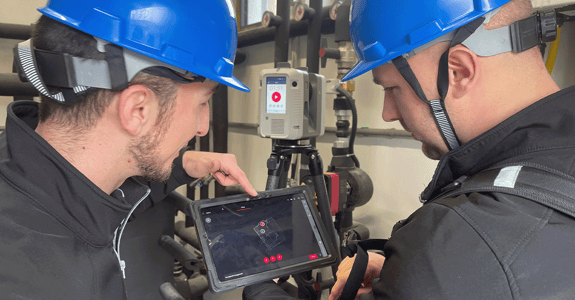
3D LASER SCANNING
WE SCAN
- Buildings, facades
- Manufacturing plants
- Mechanical installations
– heating, ventilation, air conditioning
– sanitary and sewerage
– fire protection systems - Terrain
- Open spaces

3D LASER SCANNING IN ALL PROJECT PHASES
The main advantages
Requirements for a 3D scan
- Secure and stable scanner set-up points for the scanner tripod
- Only non-moving objects can be captured
- Only in dry outdoor weather conditions

FAQs
The device emits laser beams spherically and measures all objects visible in it. In parallel, a 360° photo is taken to obtain the RGB colors.
In order to minimize so-called shadows, hidden areas that are not visible from the scan standpoint, several scans must be made from different positions to achieve the best possible result.
Useful applications for 3D laser scanning are, for example:
- – Documentation of existing facilities, which must be considered during planning
- – As-built documentation
Depending on the installation density and the scan resolution, a scan takes between 1-2 min. per recording point. Each recording point covers on average between 10m² (technical center, high resolution) and 100m² (large open space, architecture only, low resolution) depending on the viewing area.
The final processing (the registration) requires about 20% of the total recording time.